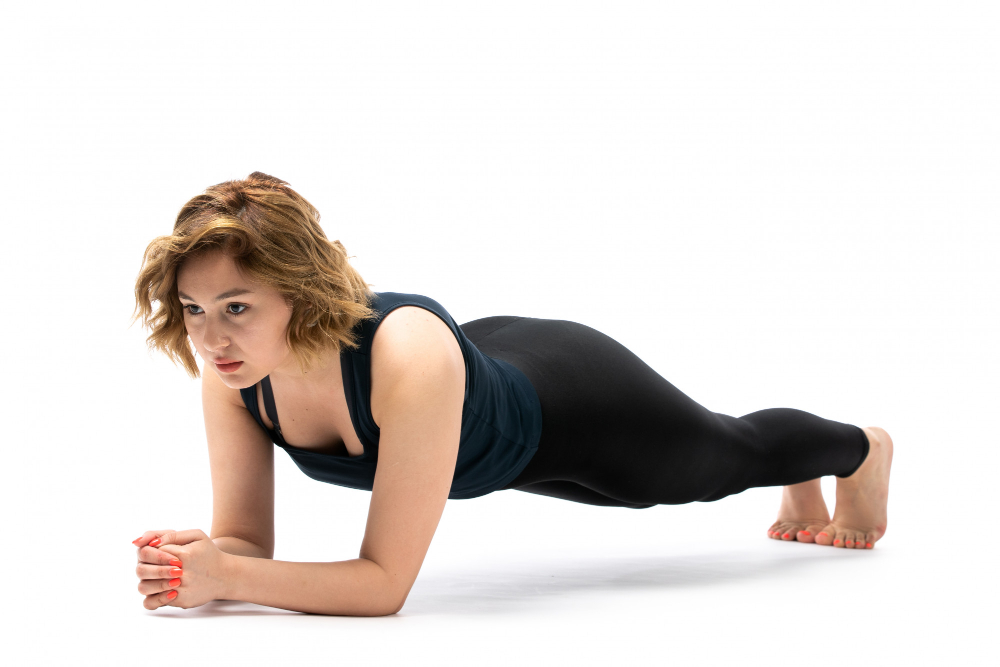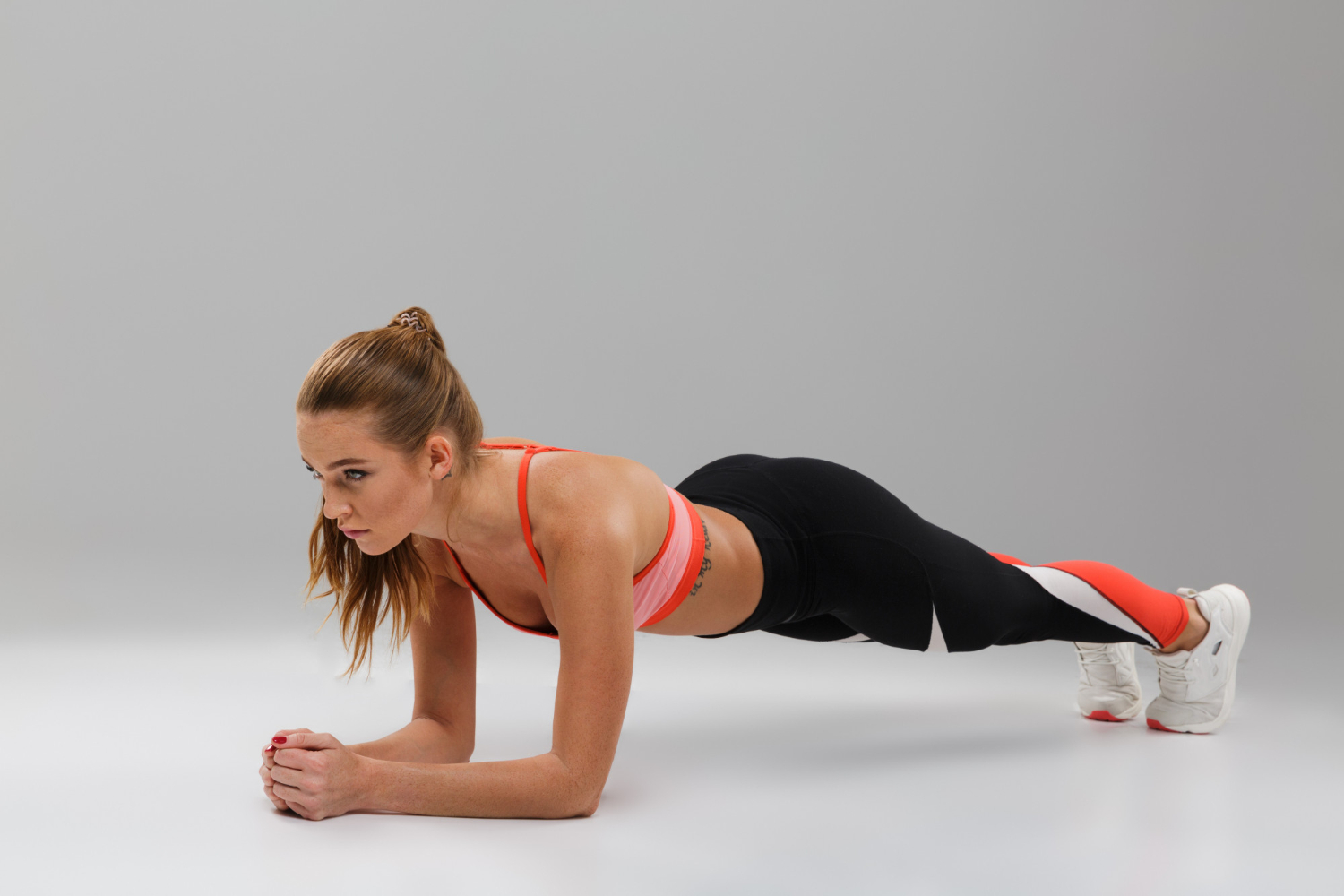Phalakasana, also known as the Plank Pose, is a foundational yoga pose that helps strengthen the entire body. It is a simple yet powerful pose that requires you to support your body weight on your hands and toes, forming a straight line from head to heels. By practicing Phalakasana regularly, you can improve your core strength, stability, and posture.
The key focus of Phalakasana is to engage the muscles of the core, including the rectus abdominis, transverse abdominis, and obliques. It also works the muscles of the arms, shoulders, and legs. This pose helps build overall body strength and endurance, making it an excellent addition to any fitness routine.

In addition to its physical benefits, Phalakasana also has mental and emotional benefits. It helps in improving focus and clarity of thought. The stability and balance required in this pose can help calm the mind and reduce stress and anxiety. By practicing Phalakasana regularly, you can experience a sense of grounding and inner strength.
Physical Benefits of Practicing Phalakasana
Practicing Phalakasana regularly offers numerous physical benefits, including:
– Strengthens the Core muscles, abdominals, obliques, and lower back
– Tones the arms, shoulders, and legs
– Improves posture and spinal alignment
– Enhances overall body strength and endurance
– More flexibility in the hamstrings and calves
– Supports weight loss and calorie burning
– Improves balance and stability
– Enhances athletic performance in other activities
To maximize the physical benefits of Phalakasana, it is important to maintain proper form and alignment. Engage your core muscles, keep your back straight, and avoid sagging or lifting your hips.
Mental and Emotional Benefits of Phalakasana
In addition to its physical benefits, Phalakasana also offers several mental and emotional benefits, such as:
– Improves focus, concentration, and mental clarity
– Calms the mind and reduces stress and anxiety
– More inner strength
– Boosts self-confidence and self-esteem
– Increases feelings of empowerment and resilience
By practicing Phalakasana regularly, you can cultivate a greater mind-body connection and experience a sense of peace and well-being.
Which muscles are worked upon in plank pose
Phalakasana primarily targets the following muscles:
– Rectus abdominis: This is the ‘six-pack’ muscle that helps flex the spine and stabilize the core.
– Transverse abdominis: This deep abdominal muscle supports the spine and provides stability.
– Obliques: The oblique muscles are located on the sides of the abdomen and help with twisting and side bending movements.
– Deltoids: These are the muscles of the shoulders that help with arm and shoulder movements.
– Rhomboids: These muscles are located between the shoulder blades and help retract the scapulae.
– Glutes: The gluteal muscles, including the gluteus maximus, medius, and minimus, provide stability to the hips and help with hip extension.
– Quadriceps: These muscles are located in the front of the thighs and help with knee extension.
– Hamstrings: The hamstrings are located in the back of the thighs and help with hip extension and knee flexion.
– Calves: The calf muscles help with ankle plantar flexion.
By engaging these muscles in Phalakasana, you can strengthen and tone them, leading to improved overall body strength and stability.
Tips for Perfecting Your Phalakasana Practice
To get the most out of your Phalakasana practice, consider the following tips:
– Start with modified variations: If you are new to Phalakasana or have limited upper body strength, you can begin with modified variations, such as performing the pose on your knees or using a prop, like a block, under your hands.
– Engage your core: Focus on actively engaging your core muscles throughout the pose. This will help you maintain a straight line from head to heels and avoid sagging or lifting the hips.
– Align your body: Pay attention to your body alignment. Keep your wrists directly under your shoulders, spread your fingers wide for stability, and press firmly into your palms and fingertips.
– Breathe deeply: Remember to breathe deeply and evenly throughout the pose. This will help you stay focused, calm, and centered.
– Take it slow: Don’t rush through Phalakasana. Take your time to find proper alignment and engage the muscles correctly. The quality of the pose is more important than quantity.
– Listen to your body: As with any yoga pose, it is important to listen to your body and honor its limitations. If you experience any pain or discomfort, modify the pose or seek guidance from a qualified yoga instructor.
By following these tips, you can enhance your Phalakasana practice and achieve greater benefits.
Variations of Plank Pose
Phalakasana can be modified and adapted to suit different fitness levels and needs. Some variations of the Plank Pose include:
– Knee Plank: This variation involves resting the knees on the ground while maintaining a straight line from head to knees. It is a great modification for beginners or those with wrist or shoulder issues.
– Side Plank: In this variation, the body is supported by one arm, with the feet stacked or staggered. Side Plank targets the oblique muscles and adds an element of balance.
– Forearm Plank: Instead of supporting the body with the hands, this variation is performed on the forearms. It is a good option for those with wrist discomfort.
– One-Legged Plank: This variation involves lifting one leg off the ground while maintaining the plank position. It adds an extra challenge for the core and leg muscles.
– Plank Jacks: This dynamic variation involves jumping the feet wide apart and then back together while maintaining the plank position. It adds a cardiovascular element to the pose.
– Decline Plank: This variation is performed with the feet elevated on a stable surface, such as a bench or step. It increases the challenge for the upper body and core.
By exploring these variations, you can add variety and intensity to your plank practice.
Common mistakes while performing Plank pose
While practicing Phalakasana, it is important to be aware of common mistakes to avoid injury and maximize the benefits. Some common mistakes to note:
– Sagging or lifting the hips: To maintain proper alignment, it is crucial to keep your body in a straight line from head to heels. Avoid sagging or lifting the hips, as this can strain the lower back.
– Collapsing the shoulders: Remember to engage your shoulder muscles and avoid rounding or collapsing the shoulders. This will help maintain stability and prevent shoulder injuries.
– Holding the breath: It is common to hold your breath or shallow breath when holding challenging poses like Phalakasana. Focus on breathing deeply and evenly to stay relaxed and centered.
– Overarching the lower back: Be mindful of your lower back and avoid excessive arching. Engage your core muscles to support your spine and focus on maintaining a steady position.
– Placing the hands too far apart or too close together: Your hands should be shoulder-width apart and directly under your shoulders. This provides a stable foundation and optimal alignment.
– Not engaging the core: The core muscles play a key role in Phalakasana. Be sure to actively engage your core by drawing your navel towards your spine. This will help you maintain stability and prevent strain on the lower back.
By avoiding these common mistakes and practicing with proper form and alignment, you can safely and effectively reap the benefits of Phalakasana.


1 thought on “Exploring Phalakasana : The Plank Pose”